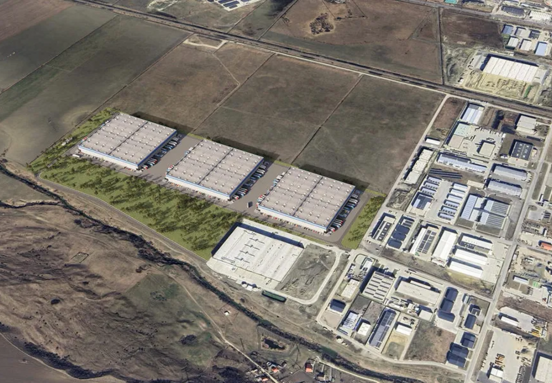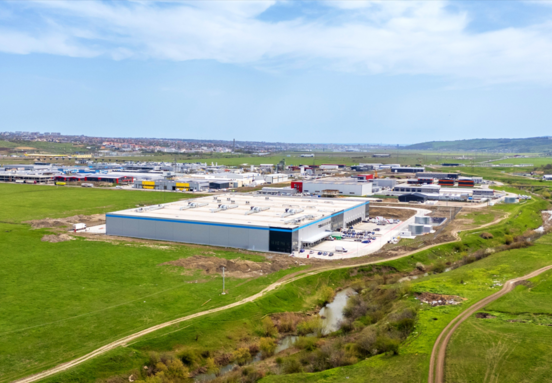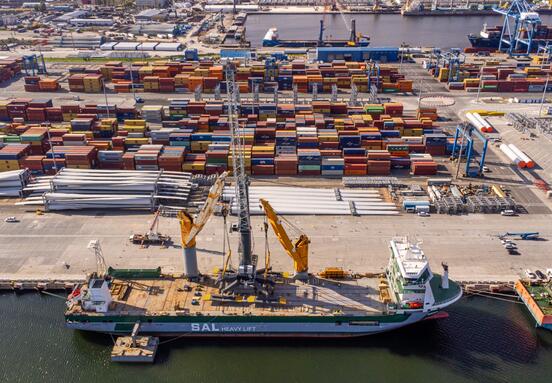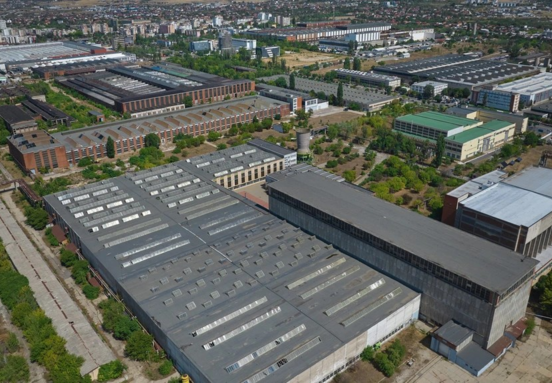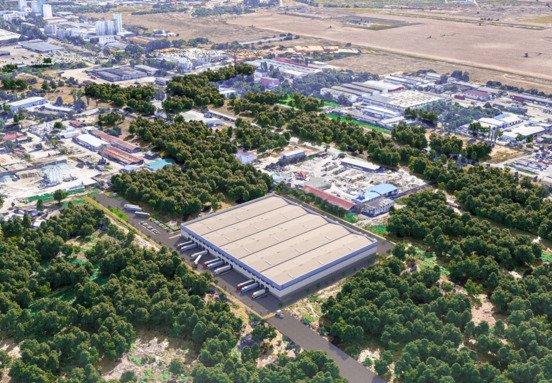"We decided to go with small steps and invest in hubs around airports, last year we inaugurated the most modern centre in Timisoara, we have doubled the capacity of the hub in Cluj and now we are trying to find a solution for a greenfield cargo centre, on airports in Bucharest, we sent letters to this effect to the Ministry of Transport, Ministry of Economy. After six years of unsuccessful attempts maybe we’ll get an answer ", said Luigi Vendrami, Network Operations Manager of DHL Express, during the conference ZF Transport&Logistics'16.
The bad infrastructure was a problem also for the expedition house I.B.Cargo. Cătălin Putineanu, managing partner IB Cargo, said the infrastructure in Otopeni airport is very down.
„There are no investments in development of the runaways, so larger planes could land too. Constanţa Port is in the same phase of the infrastructure, there is no warehouse even close to what we find on the A1 motorway “, he said.
In the latest years though, planes became a more viable option for cargo transport so the volume of the air freight doubled in the last 15 years.
The largest developers of logistics spaces as well as the logistics and transport companies focus the West and South areas of the countries for their major projects, as here are expected the most important infrastructure projects. The players in the industry say that the infrastructure continues to be the main problem of Romania.
"All investments in infrastructure are expensive, but in 2010 there was a study that demonstrated that one Euro uninvested in infrastructure brings loss of ten Euros in emerging economies, if we stole one billion Euros in infrastructure will attract a loss of ten billion Euros. The succession of political changes does not come with these perspectives, we have some ports which were damaged, as well as the rail, given that we had this opportunity, it was a lack of perspective", said Constantin Isac, President of the National Union of Carriers, during the ZF Transport&Logistics'16 conference.
More and more expedition houses are choosing to deliver the cargo with the plane, given the poor road and rail infrastructure. In Romania, the railways have transported 50 million tonnes of cargo in 2014, against 70 million tonnes of cargo in 2000 and nearly 220 million tonnes of cargo in 1990, according to data from the National Institute of Statistics. The biggest problem freight carriers are facing is the low speed on the railway, 20 km / h, which is reduced from year to year due to lack of investment in rail infrastructure.
Jeroen Fabry, Business Unit Manager of the logistics company H. Essers, said during the event that Romania has to solve the infrastructure problem, otherwise will lose to some smaller countries.
„I can carry freight on train from Curtici to Bucharest because it will arrive in two days (...). If Serbia joins the EU, it will surpass Romania. Government should take initiative and finish the segment within Corridor IV. We always say that Romania is the second house because we believe in the country's development and in achieving this logistics hub. But we need to have infrastructure“, the manager said.
The logistics space stock is increasing in Romania, where there are currently nearly 2 million of square metres of logistics and industrial spaces, the companies in the field estimating the stock will reach 8-9 million square metres in the following years. The developers are already prepared.
The need of logistics and industrial spaces is increasing taking into consideration that the Romanian economy is on the rise, the trade and exports are growing and the Romanians have more money for acquisitions.
„There is interest on the market, especially that for instance in Bucharest, if you want to rent 5,000 sq. m, you won’t find“, says Cristian Negruţiu, logistics director of DSV Solutions.
Valeriu Toma, head of property management CTP Invest
We reached 370,000 sq. m of logistics and industrial spaces in Romania, we focused a lot on the development across the Pan-European Corridor I. We try to keep the expansion pace, we intend to reach one million square metres in Romania by 2018. In the future we will also focus on the centre of the country. We have a model in the Czech Republic and we can replicate it in Romania. The shareholder of CTP believes it is the perfect time for development. We will start the construction of some additional 30,000 sq. m, with the possibility to add another 56,000 by the end of the year. This brings us towards to milestone of one million square metres.
Ion Lixandru, vice-president of the Romanian Association for Logistics (ARILOG) and administrator of Camion Logistic
Countries such as the Czech Republic, Hungary or Slovakia are oversaturated with logistics facilities. That means more freight than the market could absorb is stored there. Perforce it must move. We have more opportunities. Two years ago I said that (Romania) could become a hub for Eastern Europe and the former Soviet countries which depend on the European community. We are a hub. Constanta Port is continuously increasing for the last 15 years. Romania's future is due to the arch that Poland did, everything comes to us because Bulgaria cannot cope.
Cătălin Olteanu, general manager FM Logistic
We are growing because around us there are lots of wars, as many multinationals left Ukraine and came to Romania, because lots of companies from the Western Europe or America prefer Romania as a hub, with Turkey becoming unstable, Bulgaria and Greece very close to those zones. We are in that area where Romania has a huge chance to grow. Having or not roads, Romania is where it should be on the map.
Laurenţiu Duică, head of leasing P3 Logistic Parks
If we look at Slovakia, a country with 4 million inhabitants, we see that it has nearly over 3 million square metres of logistics spaces. I believe the reason for the shareholders of P3 decided to come to Romania was also the transformation of the country to a hub which could easily serve countries such as Bulgaria, the Republic of Moldova and the countries in former Yugoslavia. Reaching 8-9 million square metres in the following 5-6 years is very sustainable. Currently we have nearly 2 million sq m A class offices, with one million in Bucharest. Everything depends on the fiscal policies. The owners of P3 have bet on these fiscal relaxation policies, the economic growth and the position of Romania.
Cristian Negruţiu, logistics director DSV Solutions
If we calculate the distance Bucharest-Sofia and Bucharest -Satu Mare we will understand why Romania becomes a hub for the two countries. Many companies we work consider Romania as a single market in terms of logistics. For several years in Romania, logistics and industrial spaces were not built due to the crisis and because many transactions were signed in this period. There is interest in the market, especially since for example in Bucharest if you want to rent 5,000 sqm, you cannot find.
Daniela Midvichi, acquisitions director GEFCO România
Gefco had two figures growth last year and this year we estimate a similar growth. We invested in human resources, we have a larger number of employees in each department. Moreover, we have new clients but we are also developing the relationship with current clients. We intend to grow on the air and sea segments. We transport abroad electronics, automotive and bring back about the same type of products. Dacia is the largest customer in Romania.
Constantin Isac, vice-president of the National Union of Road Carriers in Romania (UNTRR)
It is extremely important that Romania becomes a hub and take advantage of the geographic position it has. All investments in infrastructure are expensive, but in 2010 there was a study that demonstrated that one Euro uninvested in infrastructure brings loss of ten Euros in emerging economies, if we stole one billion Euros in infrastructure will attract a loss of ten billion Euros. The succession of political changes does not come with these perspectives, we have some ports which were damaged, and so was the rail.
Cătălin Putineanu, managing partner IB Cargo
I believe we are more of an internal consumption country and less a hub. The largest airport in Romania – Otopeni – has a very bad infrastructure. There are no investments in development of the runaways, so larger planes could land too. Constanţa Port is in the same phase of the infrastructure, there is no warehouse even close to what we find on the A1 motorway. Therefore the port loses against smaller ports in other countries from the Black Sea or from developed countries. Freight which should enter through Constanţa is going through Hamburg for instance.
Dragoş Ghiţă, general director DGH Log & Sped
It is profitable to do internal transportation, but the international one is more profitable. Last year we had a turnover increase of 34 pct. We succeeded in increasing the business both with the help of the existing clients and attracting new clients.
I see a linear distribution of consumption in the big cities, but there is a problem, namely, that there are two hot spots - Iasi and Oltenia, which are not heavily industrialized but consume more goods. I think there the consumption is supported by people abroad.
Luigi Vendrami, Network Operations Manager of DHL Express
We decided to go with small steps and invest in hubs around airports, last year we inaugurated the most modern centre in Timisoara, we have doubled the capacity of the hub in Cluj and now we are trying to find a solution for a greenfield cargo centre, on airports in Bucharest, we sent letters to this effect to the Ministry of Transport, Ministry of Economy. After six years of unsuccessful attempts maybe we’ll get an answer. (source: zf.ro)
